The Fujifilm X100S – compared to the X100

Having used the previous model, the X100, I will primarily focus on the differences between these two models (that really makes a difference to me, personally).
I have linked random shots of mine from flickr into this blog post along with some RAW file samples. I am writing this blog post using firmware 1.0 on the X100S.
Feature comparison rundown
Fujifilm UK has posted somewhat of an official list of the 68 improvements the X100S has over the X100 on Google+, but there seems to be some errors in it. And of course DPReview has also compiled their changelog … but if you are looking for the more hands-on experience related changes, read on…
Auto focus
- Let’s just get this one out of the way. Incredible speed-up compared to the behaviour of the X100. According to the Phoblographer, the auto focus box size affects the focusing speed (larger box means greater chance of using phase detection pixels). I do not see this difference at all, when shooting in broad daylight. To me, there is no speed difference at different AF box sizes. My camera is loaded with firmware 1.0 at the time of writing this.
- There is something called “High Performance” under “Power Management” in the settings, which will increase AF speed further (as well as make the camera power up instantly). I do not experience any significant or noticeable speedup focusing wise. Somehow it doesn’t feel important as the AF speed is already fantastic.
- In good to ok lighting, the X100S basically never fail to find focus or miss focus.
- You can tell when there is not enough light for phase detection and when contrast detection kicks in. There will be slower AF but very little hunting. In rare occasions the camera fail to lock focus in low light. I’d say the X100S is performing much better than its predecessor. Could it be because of the new sensor?
- The minimum distance to an object which the AF while lock focus on is even smaller than on the X100 (50 cm vs 80 cm in OVF, 21 cm vs 40 cm in EVF) and it is very noticeable when shooting objects in motion such as pets, kids and the girlfriend – who tends to lunge at you sometimes when you are trying to take their picture...
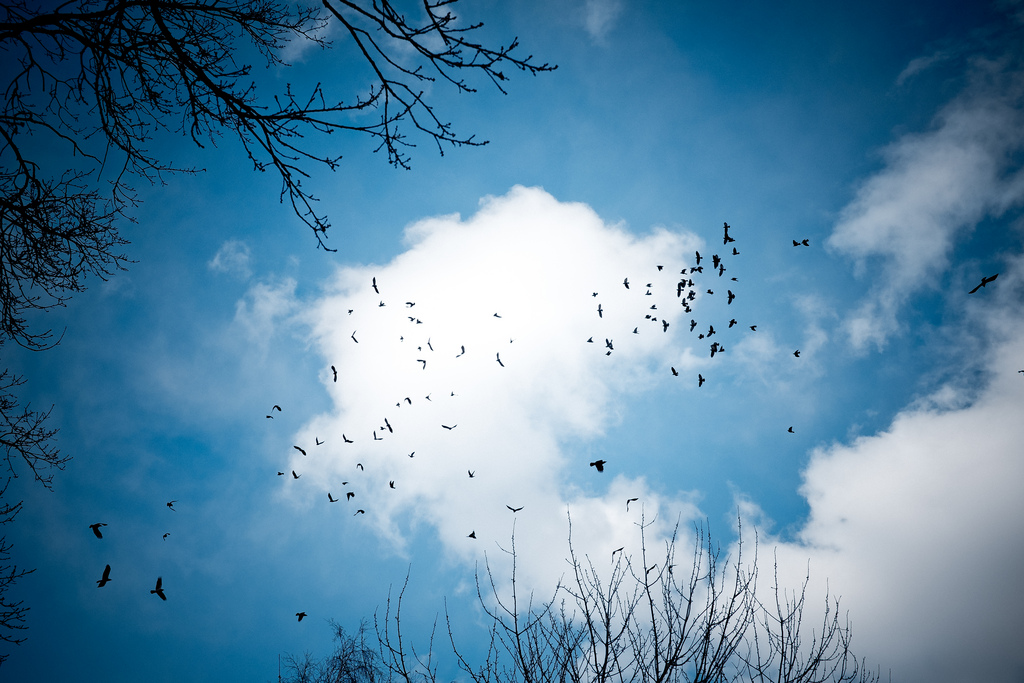 X100S 23mm, f/5.6, 1/950, ISO 200. RAW file download.
X100S 23mm, f/5.6, 1/950, ISO 200. RAW file download.
Manual focusing and the MF ring
- The MF ring is quick, responsive, smooth and it just works! It features variable sensitiveness and becomes more sensitive as you go closer (macro) which makes sense to me. MF response is super fast, even in low light. Totally different feel to this, compared with what MF is like on the X100. It’s a different camera in disguise.
- You can set the camera to automatically zoom into the MF assist modes (standard, focus peaking, split image) when you touch the MF ring. Half-pressing the shutter will zoom out. Nice feature!
- Quickly switch between AF-S and MF as they are now the outer options of the switch on the side of the camera. Minor design difference which gives major impact on how I will use this camera.
For some reason manual focusing does not work at all when shooting with the advanced filters. If the camera is set to MF, it will still behave as if it was set to AF-S.
 X100S 23mm, f/5.6, 1/100, ISO 3200. RAW file download.
X100S 23mm, f/5.6, 1/100, ISO 3200. RAW file download.
Hybrid viewfinder
- Higher resolution of the electronic viewfinder (EVF) is very noticeable and refreshing.
- Less lag, if any. When in good lighting conditions you won’t be troubled by any lag, but in very low light there is lag to the EVF.
- The auto focus, shutter and EVF works so nicely together that I virtually don’t really experience any EVF stuttering or lag (which would reveal that the camera would be struggling) when snapping photos. Clearly, “S” is for Speed. Simply fantastic. Good job, Fuji!
- Image preview is now set to 0.5s by default, a very welcomed feature which speeds up the overall usage.
- There is a new layout to the overlay information/graphics in the optical viewfinder (OVF) and the EVF. For the better in my opinion, leaving less icons or information in frame but rather up on top or to the sides.
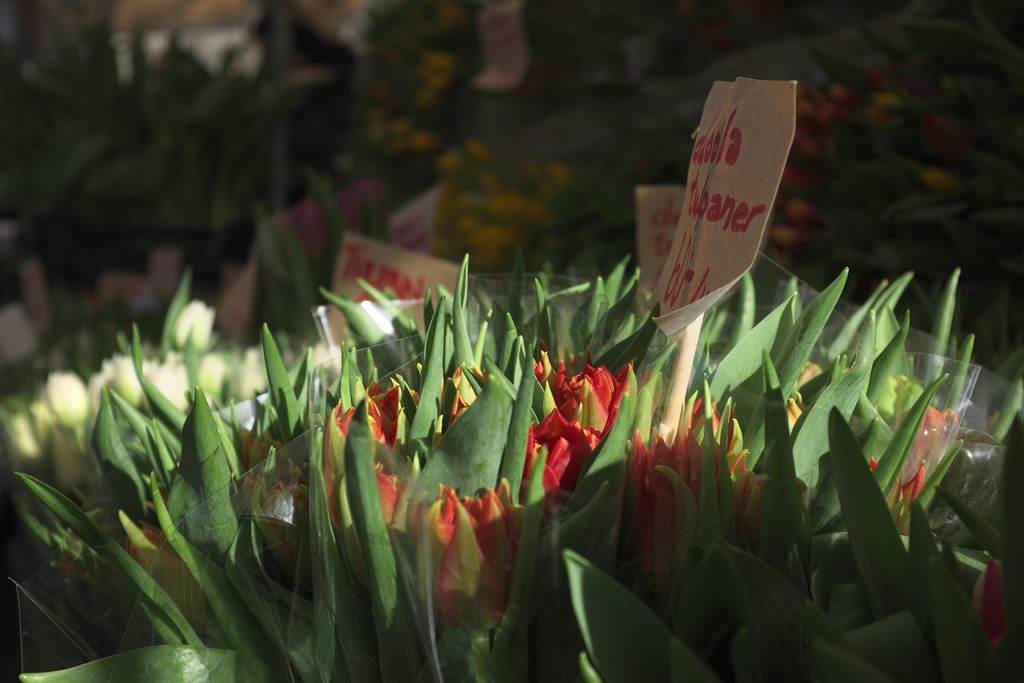 X100S 23mm, f/4, 1/125, ISO 200. RAW file download.
X100S 23mm, f/4, 1/125, ISO 200. RAW file download.
Menus and buttons in general
- The menus are now better organized and with tabs on the side, kind of like my old Canon has. Much easier to find anything.
- Auto ISO is now available in the same menu as ISO.
- Menus feel much snappier, no lag anywhere except for when entering the system preferences (blue tabs icons), which will cause a tiny delay as the OVF closes (not a problem). Anyway, now you can shoot and use the menus immediately without any lockup of the menus.
- Reviewing and deleting photos is much, much quicker due to new menus behaviour in playback mode.
- Pressing up on the command dial (that’s the wheel) will move around the AF box. I like!
- Hitting the “AE” button will bring up the photometry selection menu (Multi, Spot, Average) and this does no longer require you to press and hold the “AE” button.
 X100S 23mm, f/2.0, 1/400, ISO 200.
X100S 23mm, f/2.0, 1/400, ISO 200.
The Q button (Quick menu) confusion
- The new Q button is a quick way to choose - or divert from - the three saved custom profiles (C1, C2, C3) as well as some global camera settings (which values cannot be stored in the custom profiles).
- You can quickly change but not store custom profile specific settings via the Q menu. To store or modify a custom profile setting (ISO, DR, WB, NR, Film simulation, Highlight tone, Shadow tone, Color, Sharpness), you need to enter the regular menus (or press and hold the Q button while in the Q menu) and then store these into C1, C2 or C3.
- There are, however, global camera settings you can store directly from the Q button menu. These are Image size, Image quality, Self timer, AF mode, Flash and LCD brightness. These settings will be remembered even when you switch between C1, C2, C3 or when you modify any of the custom profile settings (as they are not part of the custom profiles).
- When diverting from a custom profile setting (ISO, DR, WB, NR, Film simulation, Highlight tone, Shadow tone, Color, Sharpness), a red dot appears to indicate that this change is a diversion from the current custom profile – and it will not be stored for the current custom profile (C1/C2/C3). If you exit the Q button menu after having made a tweak to e.g. film simulation, and then go back into the Q button menu, it will no longer show you which custom profile you are using and the red dot to mark the diversion from it. Instead, where it before said e.g. “C1”, it now says “Basic”. Even if you load up the Q button menu, choose “C1”, exit the Q button menu and then directly enter the Q button menu again, it will say “Basic” rather than going with the intuitive route which would have been saying you are still using the “C1” profile.
To summarise the above, “Basic” seems to reflect whatever state the camera is in right now. This is all very, very confusing at first. At least that’s what I thought.
On top of that little source of possible confusion, the Q button menu’s “Basic” mode does not remember the Auto ISO setting when scrolling through C1/C2/C3/Basic while in the Q button menu. Instead it inherits values from custom profiles C1 or C3 (depending on which way you scroll through the three custom profiles). This, I would say has to be a clear-cut bug, and which I hope Fujifilm will address in an upcoming firmware update. Update April 22nd, 2014: This bug was fixed with firmware update 1.20.
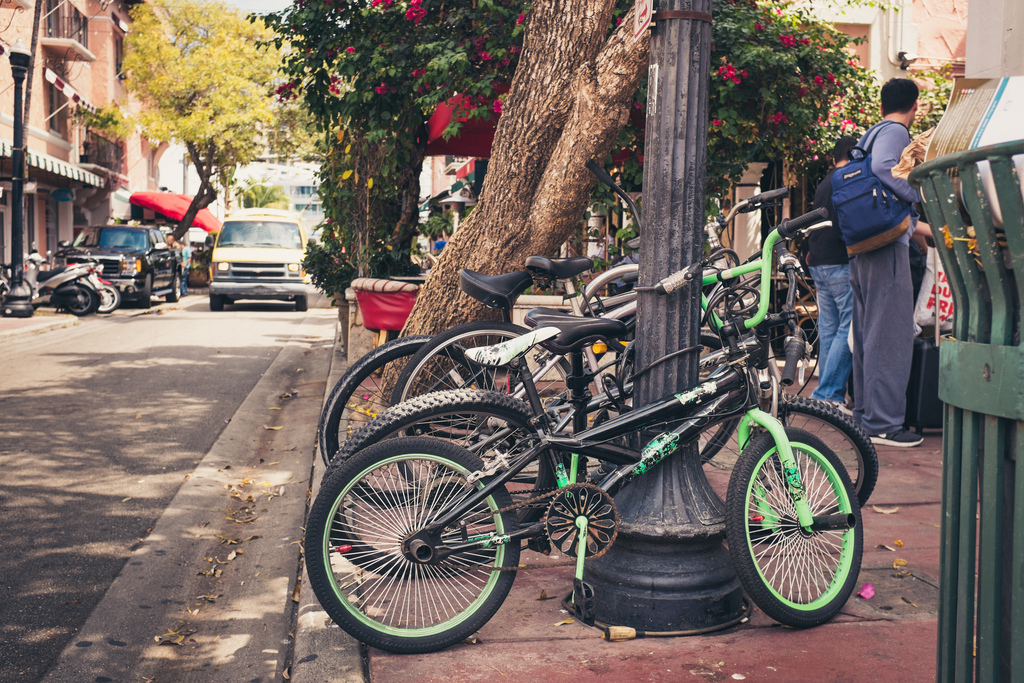 X100S 23mm, f/4.0, 1/480, ISO 400.
X100S 23mm, f/4.0, 1/480, ISO 400.
The less confusing parts of the Q button
- Since the Q button is replacing the older RAW button, this button can now no longer serve as a second Fn button (as it could on the X100). In my opinion, the X100S should have had a second Fn button somewhere as I really, really miss having two Fn buttons mapped to ISO and ND filter respectively. I can’t see this happen via a firmware update though, because all buttons are taken and are all equally important.
- Press and hold Q results in increased brightness of LCD. Great for shooting and reviewing shots outdoors in bright light. Nice!
- Press and hold Q when inside the Q menu brings you directly to the custom profiles setup. Then make the changes and exit with the DISP BACK button to save the custom profile settings.
- The Q button is sunken into to the body, making it easier to identify while looking through the view finder than its former equivalent on the X100.
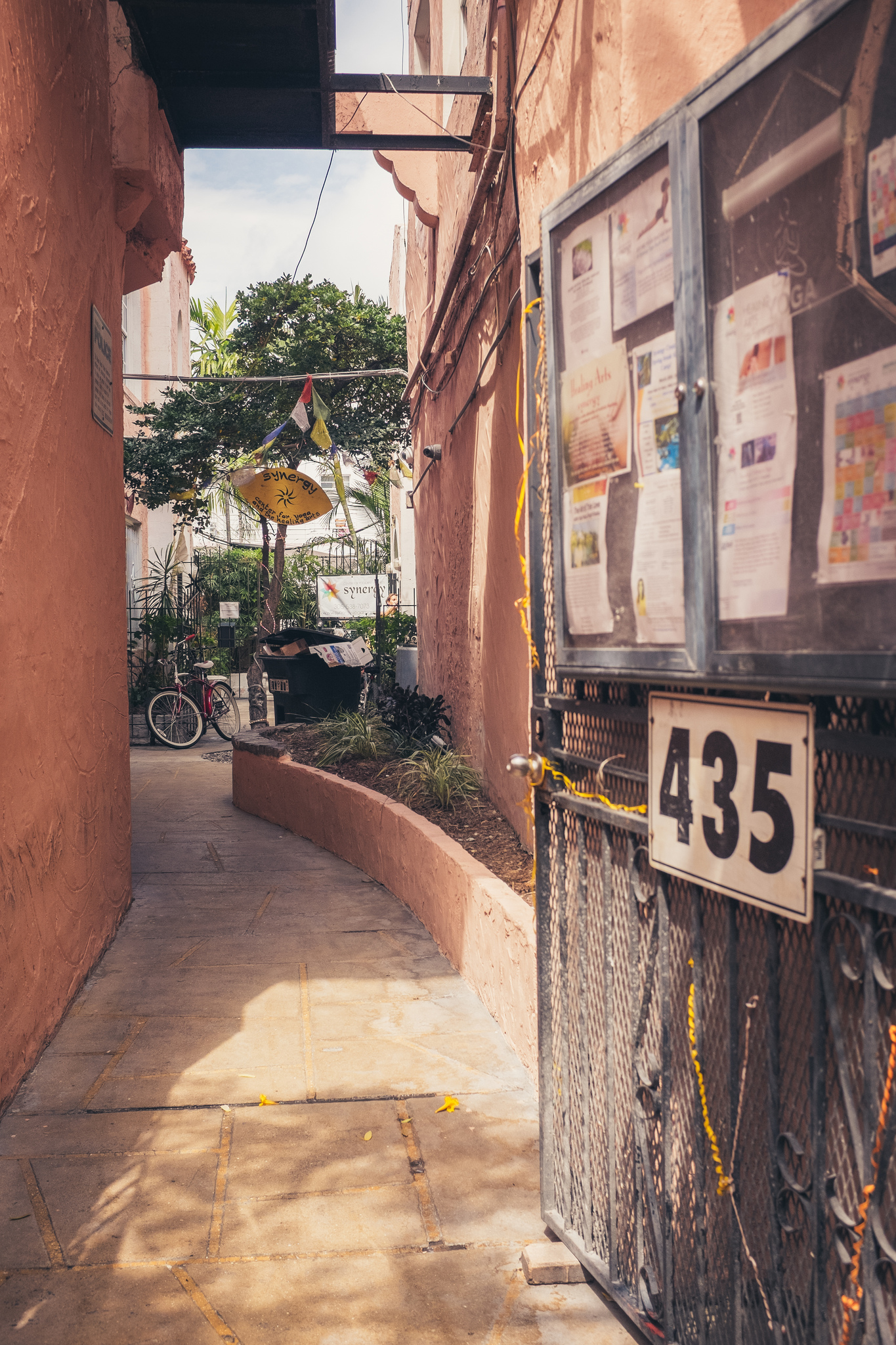 X100S 23mm, f/4.0, 1/950, ISO 800.
X100S 23mm, f/4.0, 1/950, ISO 800.
Video
The video capabilities of the X100S is a big step up from the X100, but it is nowhere near a professional tool for video production, and clearly never intended as such. I was hoping to be able to use the X100S for some personal video recording, but I’m not so sure.
- The MF ring works really well while recording video. When turning the MF ring, it’s hard to not shake the camera (just like with any camera) and some sound noise is generated.
- MF assist does not work with video, where it is badly needed. Especially focus peaking. I hope Fujifilm will implement this in a future firmware update.
- Macro control can’t be reached in video mode (you have to exit video mode and enable macro, then go back into video mode and it will work).
- There sometimes seems to be strobing in video where there is bright light. This is even mentioned in the English PDF manual to ensure you it’s nothing wrong with your camera. I’m not sure entirely how to avoid strobing as it is hard to spot while recording and becomes more apparent back home in front of the computer. It’s most likely the shutter speed frequency that coincides with the frequency of fluorescent lights. The strobing completely ruins whatever it is you have filmed, in my opinion.
- CMOS rolling shutter as well as hand-held shake are other issues which you have to look out for. Clarification: if you want to shoot video hand-held with the X100S, think again.
- The controls you have to your disposal when recording video are aperture, exposure compensation, white balance, film simulation and frame rate (30 fps or 60 fps). Then you choose between auto or manual focus. No shutter control. The camera will choose something suitable for you, kind of like how the EVF works.
- Film Simulation is inherited and set globally, affecting the very same setting for still image shooting. To me, this does not make sense as I would want to adjust video settings separately from still photo shooting. This also means that there is no way you can tweak sharpness, shadows or highlights before shooting video. You will just have to rely on the default settings of the available film simulations.
- It’s a little difficult to keep the black level at bay and it is easily crushed. So far I think the ProNeg Std is the best film simulation for video. It’s hard to remember to always make sure this one is set though (see the previous bullet).
- You may get really bad aliasing effects (jagged edges at contrasty areas), depending on camera settings and subject.
- Much improved bitrate/quality, video looks good for this type of camera, better than what the X100 can produce. Both 30 fps and 60 fps modes produce h264 1920x1080 .MOV fles. They will both have a total bitrate of about 38 Mbit/s (compared to the X100’s 10 Mbit/s) which should mean that the 30 fps one should have greater image quality. Video bitrate is around 36 Mbit/s and sound is around 1.5 Mbit/s (and that’s Linear PCM 16-bit, 48kHz, Stereo).
- Movies shot in 60 fps looks unnatural when played back. I also don’t like the 48 fps movies in the cinema, for your reference…
 X100S 23mm, f/8.0, 1/500, ISO 200.
X100S 23mm, f/8.0, 1/500, ISO 200.
JPEG
- Continuing the Fujifilm tradition of producing amazing skin tones and vivid colors which are in practicality impossible to reproduce in RAW editing, the X100S does not disappoint one bit.
- Sometimes noise reduction smearing appear at default value when pixel peeping at 100% scale in post production. I’m experimenting with custom NR values here and currently have NR set to -1 or -2. Read more about this under “My current settings”.
- When shooting JPEGs in ISO 6400, the skin tone algorithm seems to go bananas and just totally smoothens out faces/skin into molten wax. Unfortunately it does not seem to help to use a certain film simulation or certain JPEG development settings to make this go away. Since I shoot F+RAW these photos always need to go through the RAW treatment because the JPEGs are just to smooth within the color values of skin tones. I believe this could be fixed with a firmware update and would result in more grainy photos, but that would be much better than the current and excessive smoothing in my opinion.
- Two new film simulation modes are available: Pro Neg. Std. and Pro Neg. Hi.
I would recommend all JPEG shooters to start out by shooting F+RAW of RAW and try different JPEG developing settings with the built-in RAW converter. This is the only way you will be able to find those magic JPEG settings you are looking for as they are not at all the same as on the X100.
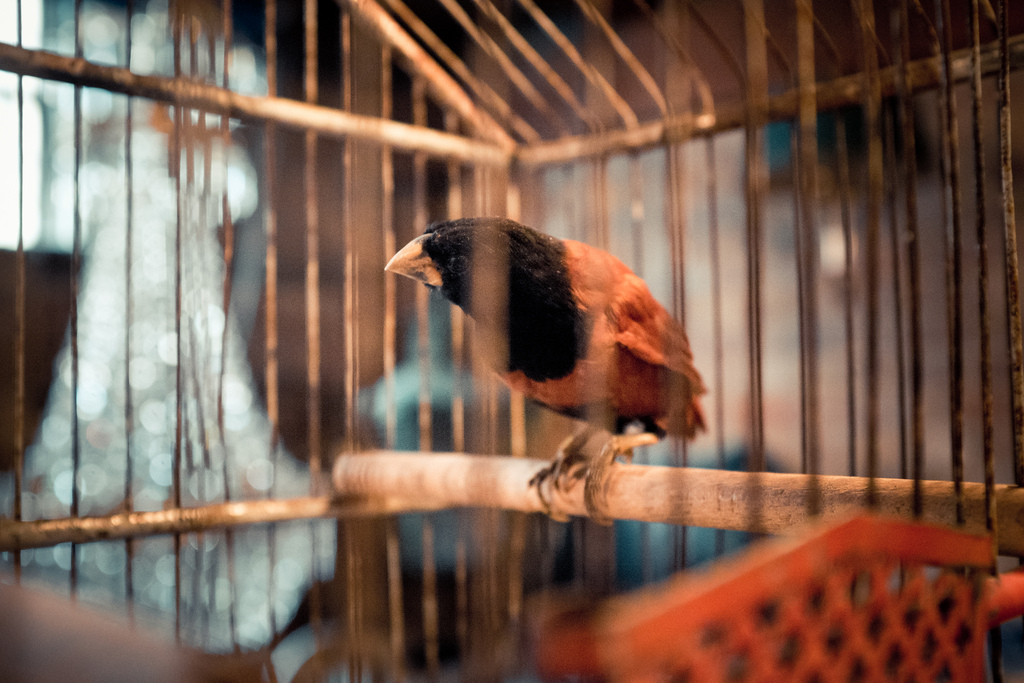 X100S 23mm, f/4, 1/60, ISO 6400. RAW file download.
X100S 23mm, f/4, 1/60, ISO 6400. RAW file download.
ISO
- ISO 6400 is now available in Auto ISO.
- Banding, which would appear at ISO 3200 with the X100 is now completely gone!
- Auto ISO is really good, but it does not beat setting it manually when shooting in low light (unless you need to shoot ISO 6400, of course).
- The “Advanced filters” feature is limited to ISO 800 (and JPG).
Check out the photo below. Is that pretty darn good for being ISO 6400 or what? It’s actually usable where ISO 3200 on the X100 was completely unusable (in my humble opinion and for my purposes, that is).
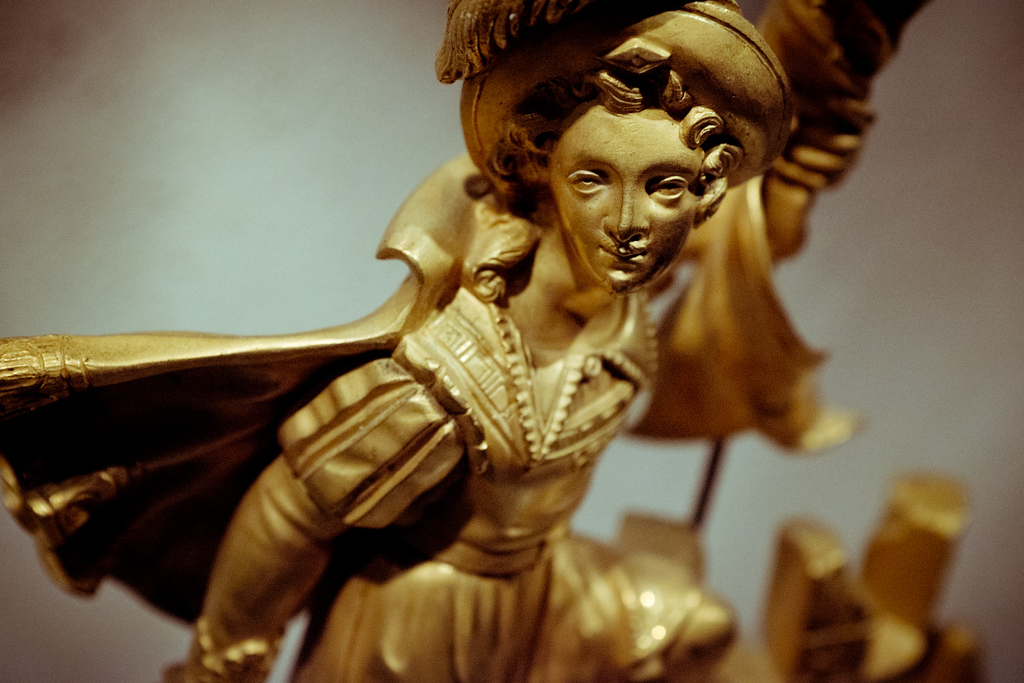 X100S 23mm, f/5.6, 1/125, ISO 6400. RAW file download.
X100S 23mm, f/5.6, 1/125, ISO 6400. RAW file download.
White balance
- After having set the white balance, you can now fine-tune it in a two-dimensional grid by shifting cyan, blue, red and yellow.
 X100S 23mm, f/2.0, 1/340, ISO 200.
X100S 23mm, f/2.0, 1/340, ISO 200.
Exposure and metering
- The X100S abides the Sunny 16 rule according to the Phoblographer.
- In manual exposure mode and when half-pressing the shutter there is no auto gain to the EVF (read more under “Other things worth mentioning” further down).
- With the X100, sometimes shots would come out a tiny bit overexposed (I’m not talking SAB). This is something that I do not experience with the X100S.
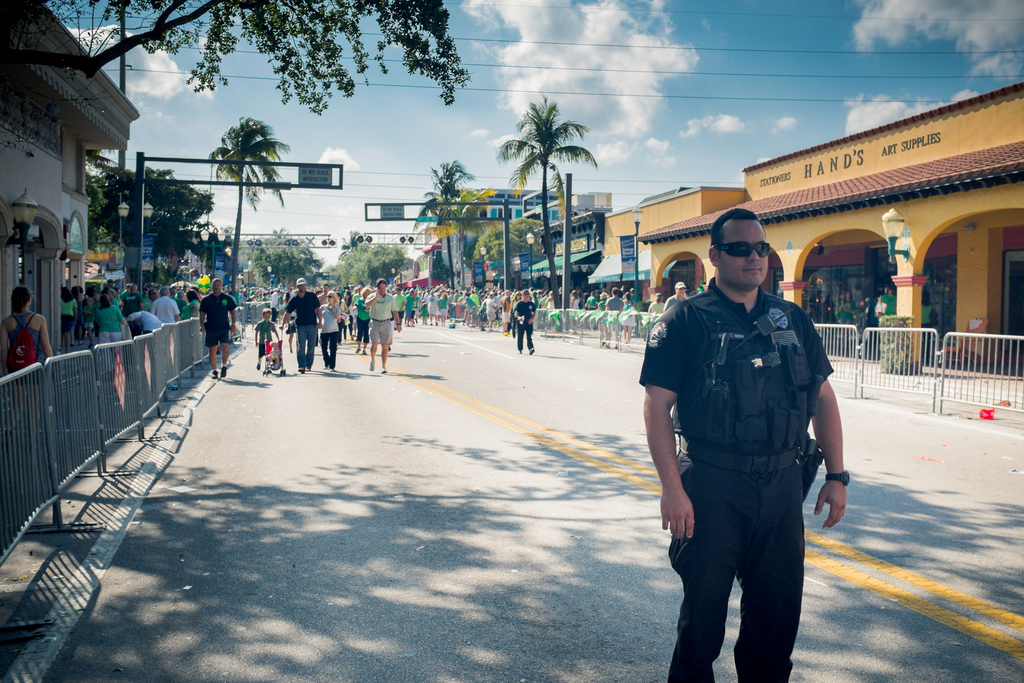 X100S 23mm, f/2.8, 1/350, ISO 200.
X100S 23mm, f/2.8, 1/350, ISO 200.
Drive modes
- F+RAW disables some bracketing modes (they’re only available in JPEG mode): ISO, film simulation and dynamic range.
- New Multiple Exposures mode works in JPEG mode only.
- You can now use the ND filter in Motion Panorama mode.
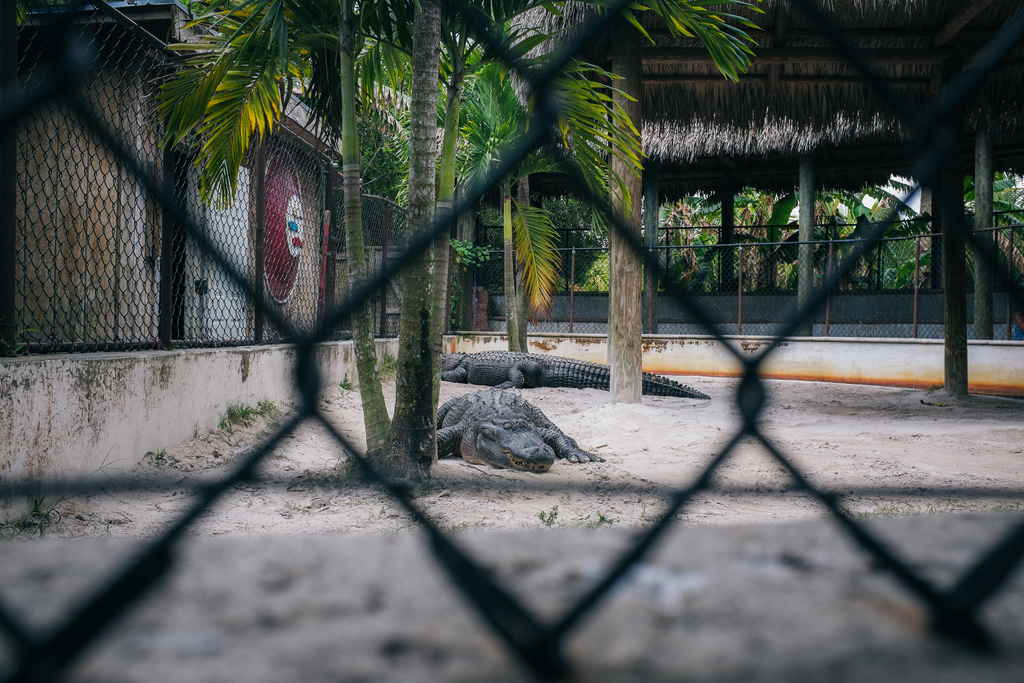 X100S 23mm, f/5.6, 1/125, ISO 250.
X100S 23mm, f/5.6, 1/125, ISO 250.
Battery life
I managed to squeeze out 406 photos over several days during “normal travelling usage” (just two of them with flash) in F+RAW mode on one NP-95 battery. No video was shot on this charge.
When you see two (out of three) bars, change the battery, just like on the X100.
 X100S 23mm, f/4, 1/550, ISO 200 RAW file download.
X100S 23mm, f/4, 1/550, ISO 200 RAW file download.
Raw & X-Trans
Update 8th April, 2014: Adobe today released Adobe Camera RAW 8.4 which includes huge improvements on color rendition in Lightroom 5.4 and Photoshop CC (version 14.2.1).
ACR 8.4 enables the best color rendition achievable in Lightroom by utilizing custom camera profiles (Provia, Astia Velvia, ProNeg, Monochrome etc). Definitively go check this out right now!
Update 16th June, 2013: I have made a custom camera profile for the X100S which addresses my complaints on X100S RAW file color rendition in Lightroom. Go here to check it out!
Update 18th April, 2013: Apple has released native X-Trans support and this is by far the best RAW conversion available for the X100S. If you are on a Mac, go get this right now. The problems described below are eliminated if you use this for RAW conversion. You may have to perform some defringing and look out for color noise, but that’s usually easy to eliminate.
Tip: You can install this update from Apple, then open the .RAF files directly in Preview.app and then save an 16-bit TIF file to use in Lightroom, Photoshop or other application of your choice.
Another alternative on OS X would be to check out Iridient Developer which produces excellent RAW conversion for the X100S.
The following is related to working with Lightroom 4.4 rather than the actual RAW files themselves, since Lightroom is just interpreting the RAW data this way...
- There is a super-ugly orange cast to RAW files (and especially evident in skin tones) when using Lightroom (or Adobe Camera RAW). This can be somewhat fixed with the red “Hue” and “Saturation” sliders under “Camera calibration” (a starting point is to set Saturation to +25 here), but I hope this is something that Adobe will adress.
- I feel that the shadows and black levels are somewhat harsher and darker (than on the X100) by default. Sharpness is also sharper by default. This is no problem to tweak in RAW editing.
- When looking at an ISO 200 X100S (vs X100 RAW) file at 100% scale, details looks a lot more sharper as there is absolutely zero grain and details are also a little “smeared out”, especially in high contrast areas. A guess is that there is some internal noise reduction going on in Lightroom which causes the complete grain-less image and the smearing. I would be very happy to see the smearing go away completely because it can’t really be fixed in Lightroom. I’d rather have grain, if that’s what this is about. The color smearing is not visible if you look at the images scaled down, so for the most part nobody will see it unless you crop out 100% scale parts of a photo (X100S tele conversion lens, anyone?). You could probably add in a bit of grain to remove the feel of this sharpness and smearing in some cases. But just to be clear on one thing. This is pixel peeping at a ridiculous level and it’s not reason alone to not run and buy this camera.
- On paper, the color depth of RAW files are now 14-bit (compared to 12-bit on the X100). Generally, when underexposing a scene, I find it amazing what kind of detail can be pulled out from the shadows but also from blown highlights.
Here’s a crazy idea. Since Fujifilm obviously are the only ones who really know how the .RAF RAW file should be converted into JPEG (see my JPEG notes), why don’t you (Fujifilm) enable 16-bit TIF export in the in-camera RAW converter? The reason for me saying this is not because I’m unhappy with the RAW files, it’s just that when I watch the JPEG and RAW side by side, the JPEGs just look so amazing. To me, it’s just sometimes virtually impossible to edit a RAW file to mimic local areas or features of a JPEG. But if bringing the JPEG into post production, I can’t utilize the full 14-bits of color depth.
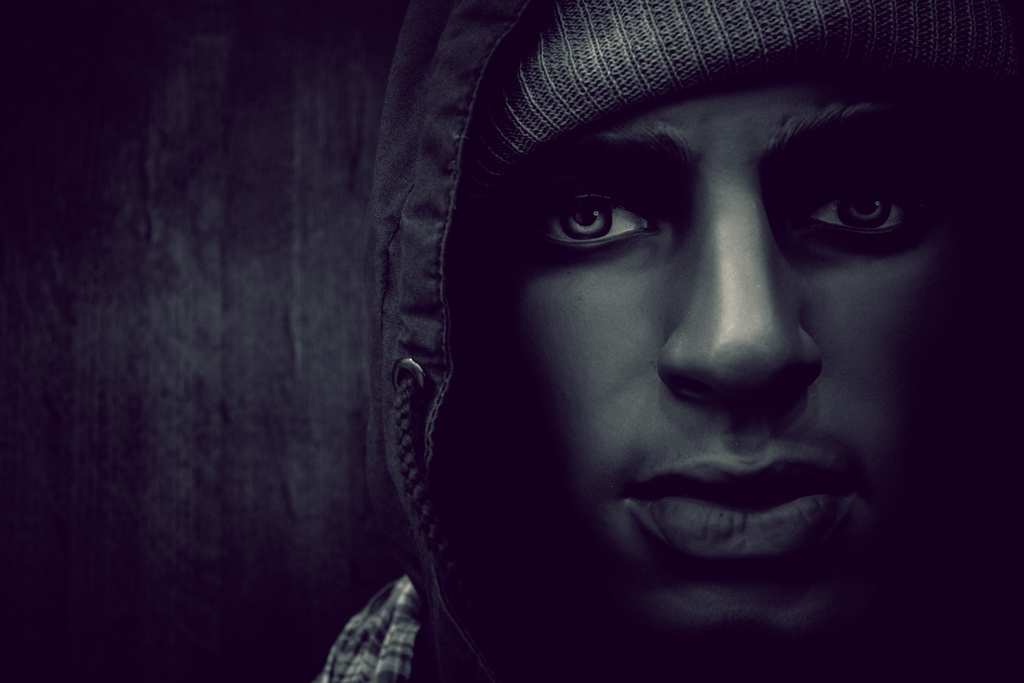 X100S 23mm, f/5.6, 1/125, ISO 3200. RAW file download.
X100S 23mm, f/5.6, 1/125, ISO 3200. RAW file download.
Other things worth mentioning
- The so called “aperture dance”, where the aperture constantly changes when panning the camera around, does no longer happen in MF mode (both OVF and EVF are good). It does, however, happen in AF-S/AF-C mode.
- EVF still auto gains in manual exposure mode (both AF and MF, shutter or AFL/AEL to lock exposure) and does not reflect the set exposure (histogram inaccurately showing the auto gained EVF). What’s new with the X100S is that at half-press of the shutter there is no auto gain, and a correctly exposed view is shown in the EVF. The histogram, however, disappears when half-pressing the shutter.
- When AF is locked, exposure compensation doesn’t work.
- AF point cannot be moved when focus has been locked.
- Image resolution is now 25% higher (16 Megapixels vs the 12 Megapixels on the old X100), resulting in higher JPEG/RAF file sizes than on the X100.
- On the X100S you can choose between aspect ratio 3:2, 16:9, and 1:1.
- Strap lugs are enforced with an inner ring of some material which will hopefully not wear down like it did on the X100. I’m still using Gordy’s straps instead of the ones provided by Fuji.
- The X100 was somewhat difficult to handle with gloves (gloves are nice to have in the winter time here in Sweden), but the X100S now has the raised menu button and this is no longer an issue.
 X100S 23mm, f/2.8, 1/1250, ISO 200.
X100S 23mm, f/2.8, 1/1250, ISO 200.
My current settings
For the JPEG settings on the old X100 I used Astia with Auto ISO and I also used to set sharpness to its maximum. However, since the JPEG output of the X100S is quite different, my current X100S settings also differ, and now I primarily use JPEGs as a neutral reference when editing the RAW files. Update 8th April, 2014: With the release of Lightroom 5.4 I can now feel confident to shoot RAW only.
Usually, I have the camera set at C2 (see below) so I can quickly pick up the camera and shoot from the hip.
Custom profile 1: Manual control
- ISO: 800
- Dynamic range: DR100
- Film simulation: Provia (Std)
- Noise reduction: -2
The rest of the values are all at their defaults.
Custom profile 2: Travel settings / quick shot profile
- ISO: Auto (max ISO set to 1600, min shutter 1/125)
- Dynamic range: DR100
- Film simulation: Provia (Std)
- Noise reduction: -2
The rest of the values are all at their defaults.
Custom profile 3: Low light / dinner preset
- ISO: Auto (max ISO set to 3200, min shutter 1/80). When necessary, I manually turn ISO up to 6400, but keep in mind skin tones get excessively smoothened in JPEGs at ISO 6400.
- Dynamic range: DR Auto – why, you may ask?
- Film simulation: Provia (Std)
- Noise reduction: -2
The rest of the values are all at their defaults.
Global settings
- White balance: Auto
- Image quality: F+RAW
- Image size: L 3:2 (4896x3264, 16M)
- Fn button: ND during summer, ISO during winter
- MF assist: Focus Peak Highlighting (High)
- AE/AF-Lock button: AF-L (focus lock only)
- Corrected AF frame: On
- Flash: -2/3
- Sound setup, Operational vol: off, shutter vol: off.
- Screen setup, Image disp: off.
- Power management, high performance: on.
 X100S 23mm, f/4.0, 1/125, ISO 800.
X100S 23mm, f/4.0, 1/125, ISO 800.
Was it worth the upgrade from the X100?
Even though the X100S has many of the same quirks as the X100, listed over here (of which none are actual issues for me after the move to the X100S) ...Ohhh yesss, without a doubt is it worth the upgrade.
I would say it’s the combo of all the speed-ups, a now working MF ring and usable higher ISO values which makes the biggest difference to me. It’s a completely different camera where the handling has improved immensely.
With the X100S, a totally normal scenario: grab the camera, power on instantly, hit Q, change to the appropriate custom profile with the appropriate ISO set, set f/11, look through OVF, tweak the AF point position, snap a shot in AF-S, check the preview, reset AF point position, reposition real close to subject (macro style), hit the MF switch (enabling the EVF and MF preview with peak focus assist) and go f/4, enable ND via Fn, acquire focus with AFL/AEL and tweak focus with MF ring with peak focus assist, mash shutter. All of this in about 10 seconds.
After returning from a vacation with almost a thousand shots, a total of three (that’s 3!) were out of focus. This may not have been the camera’s fault either. That would never have been the case with the X100, as I would have had a much larger miss rate due to the subject moving too fast. Got kids? – get the X100S.
Being able to shoot in lighting conditions where I’m used to just simply not even bother to shoot in is fantastic. A street at night was never going to look nice with the X100. Shooting in the dark? – embrace ISO 6400.
Image quality wise, the X100S is not lacking in any department compared with its predecessor – but I would encourage you to download a couple of the RAF files and judge for yourself regarding overall RAW handling and feel. The RAW files do feel a little different from the X100. I’d say they are “same but different”.
In short, if the X100S doesn’t receive the gold award over at DPReview, it has to be for some technical reason which I probably wouldn’t care about. Of course, this is a highly personal opinion, from having used the X100 for two years while being very happy with it, despite its shortcomings. This is the upgrade I have been waiting for. My hat off to Fujifilm.
Update July 30th, 2013: DPReview has finally released their X100S review – and gave it a 81% score along with the gold award.
 X100S 23mm, f/2.0, 1/60, ISO 400.
X100S 23mm, f/2.0, 1/60, ISO 400.
Firmware update wishlist
Ah yes. It’s not a proper Fuji X camera release without a firmware wish list. ;-) I set up an X100S firmwire wish list poll. You get to cast 10 votes on feature requests and when posting a new request, you can preload it with 1, 2 or 3 of your votes.
Please remember that Fujifilm did not really add that much new features on the X100 via firmware updates. Instead, they tweaked existing functionality. Also, when you go back and look at what they actually fixed, that’s not much either. So, use your votes wisely.
 X100S 23mm, f/2.0, 1/420, ISO 200.
X100S 23mm, f/2.0, 1/420, ISO 200.
Other early X100S impressions and reviews
- DPReview’s X100S review
- Zack Arias’ X100S review
- David Hobby’s (aka Strobist) X100S in-depth review
- Patrick La Roque’s X100S review
- Robin Schimko’s X100S review
- The Visual Experience’s X100 vs X100S
- Photography Blog’s X100S review
- DigitalCameraReview’s X100S review
- Simon Goldsworthy’s X100S impressions
- Simon Goldsworthy’s X100S + WCL-X100 review
- DigitalRev’s X100S review
- Ralfs Foto-Bude’s review (video)
- Riflessifotografici’s X100S impressions (translated)
- The Phoblographer’s on street photography with the X100S & full review
- Mike Kobal’s X100S low light test
- Rico Pfirstinger’s X100S vs X100
- Brian Kraft’s X100S impressions and X100S wedding shoot
- X100S unboxing (video) and X100S shutter speed (video)
- X100S Flickr Group and sample photos from DPReview, ePhotoCine, Peter Pham
X100S firmware-related
- X100S latest official firmware
- X100S Unofficial firmware wish list
- List of firmware bugs, reported by users over at the Fuji X forum
Other X100S resources
Make sure to check out some of my previous X100 articles:
- Fujifilm Finepix X100 – settings
- Fujifilm Finepix X100 – a year in retrospect
- Fujifilm Finepix X100 – RAW and film simulation
- Fujifilm Finepix X100 – LCD/EVF observations
